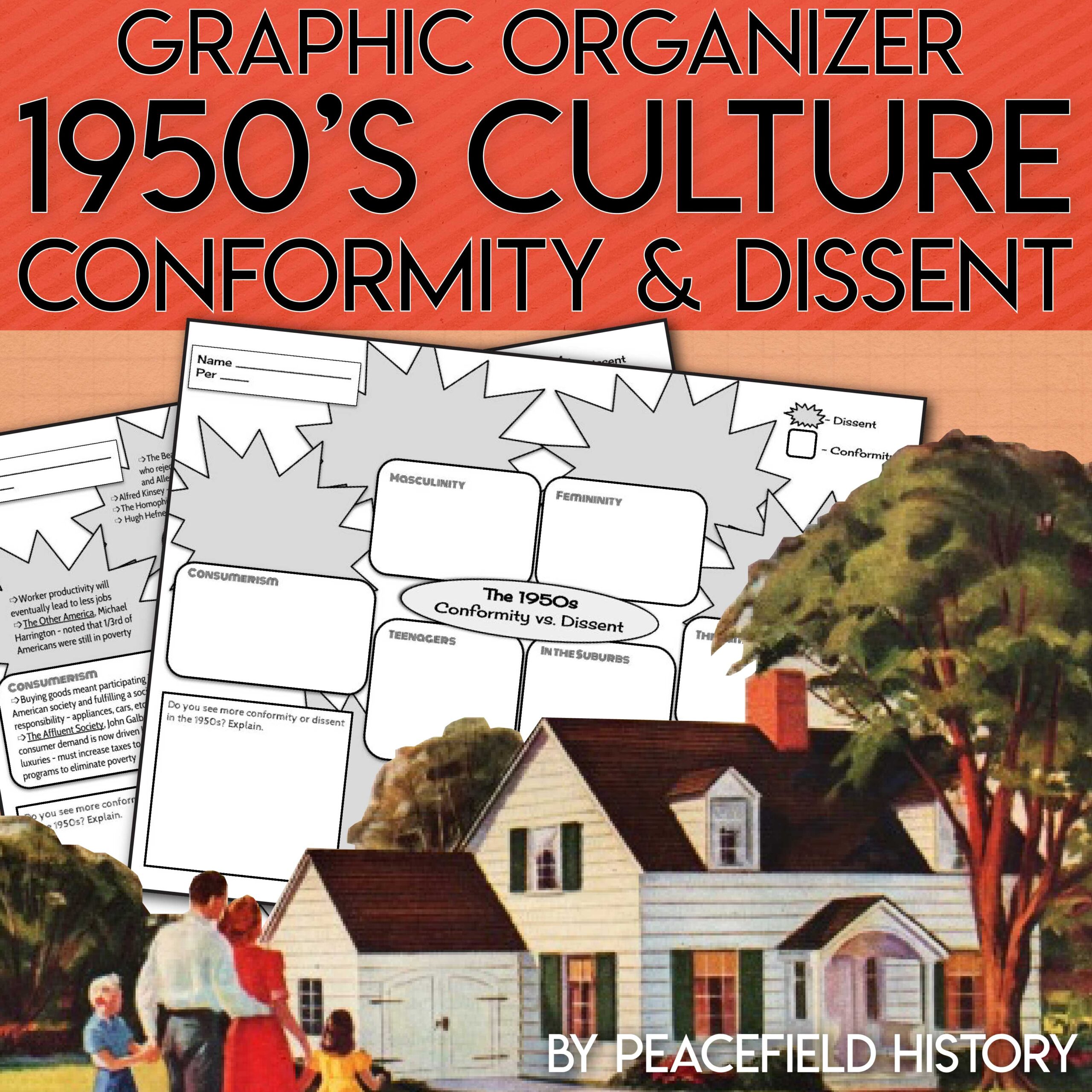Description
This graphic organizer is meant as a lesson for students discussing the cultural developments of the 1950s. Students organize the major cultural changes of the 1950s into six categories – consumerism, family, teenagers, the suburbs, femininity, and masculinity. They then divide those ideas between two sections – conformity and dissent. As a final discussion, students discuss whether the 1950s was more about conformity or dissent, and the aspects of 1950s conformity that still exist today. You can view more in the preview here.
Topics include: the G.I. Bill | Dr. Benjamin Spock | TV of the 1950s | the Affluent Society | Movies of the 1950s | teenagers | consumerism | religion | Billy Graham | the Beats | Alfred Kinsey | the baby boom | Shelley v. Kraemer | urban decay | Levittowns | the polio vaccine
Teachers can provide this graphic organizer to students to complete in class or for homework. This graphic organizer does pair nicely with America’s History (Henretta). However, using that textbook for completion is not necessary. Students may use another textbook for completion, or even use the internet.
Although I’ve only provided a blank and filled-in version of this graphic organizer, everything provided is editable. I’ve included a PowerPoint version (editable), a link to a Google Slides version (editable) and a PDF version (not editable).
© Copyright 2020 Peacefield History. All rights reserved. Permission is granted to copy pages specifically designed for student or teacher use by the original purchaser or licensee. This is intended to be used by one teacher unless additional licenses have been purchased. The reproduction of any other part of this product is strictly prohibited. Copying any part of this product and placing it on the Internet in any form besides Google Classroom is strictly forbidden. Doing so makes it possible for an Internet search to make the document available on the Internet, free of charge, and is a violation of the Digital Millennium Copyright Act (DMCA).

